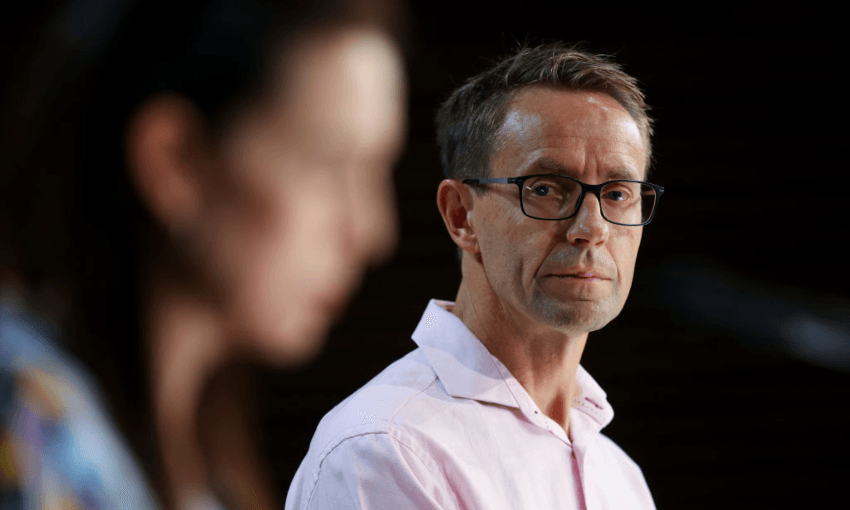Modelling expert Shaun Hendy tells Toby Manhire which factors will be instrumental in the next big decision.
Auckland begins its second of a scheduled seven days in alert level three today, with the rest of the country in level two, but it won’t be until the middle of the week that the case numbers will be instructive on the chances of stamping out the re-emergence of Covid-19 and moving back to normality, says Shaun Hendy, professor of physics at the University of Auckland and director of Te Pūnaha Matatini.
“Over the next couple of days, if we start to see positive tests come back, particularly positive tests that suggest community exposure as opposed to close contacts, that’s where the alarm bells will start to go off,” he said.
It was encouraging that there was a strong indication yesterday that the new case that triggered the measures had a person-to-person, or “epidemiological link” to another family in the cluster, said Hendy, who has led modelling work that continues to inform government alert level decisions.
“We’ve got the epidemiological link. We’ve got the genomic link,” he said. “But, mid-week, I think we’ll have a sense of the shape of this cluster, and a bit more of an understanding: is a week going to be enough, or will a week look like overkill?”
Wastewater testing will be important, too, in ruling out a widespread outbreak, he said.
The announcement yesterday that “Case M” can be linked to known cases not just by genomic sequencing but also by having been in proximity with one of those cases was a relief, said Hendy.
“If it’s a very short link between the families then that tells us there’s not a big cluster of other cases out there between them,” he said. “The worst case scenario would have been that this family had been exposed early in February somehow. Then we’d be looking at a much bigger outbreak. So the fact they’ve got a plausible same-place-same-time link between those families tells us this is probably just an extension of the cluster we’ve been dealing with for the last couple of weeks.”
The cases in what is now being called the “February cluster” are the “UK variant” of the virus. “The new variants add a couple of twists,” said Hendy. “We’ve got pretty good evidence out of the UK that this B.1.1.7 variant is about 50% more transmissible … There’s been a little bit of evidence, although it’s very preliminary, that people might be infectious for a longer period. At this stage we don’t know. But the potential for growth is much higher, so perhaps chasing down these tails in this cluster, you have to work a bit harder.”
Where an emergence in New Zealand of one of the new variants (the woman who contracted Covid in the Pullman Hotel and travelled in Northland while positive had the South African variant, which is also more transmissible) is most hazardous is in a scenario like the August outbreak, said Hendy. In a case “where we suddenly find, over a couple of days, that we’ve got 50 to 60 cases, we think at that point alert level three wouldn’t be sufficient to contain it, because of that extra 50% transmissibility”, he said. “It might keep a lid on it, but then you might need to stay in alert level three forever. Alert level four, or a ‘level-three-plus’, might be needed to bring a big cluster under control.”
In light of the new cases, was the decision to move swiftly out of the three-day level three lockdown in Auckland, which began a fortnight ago after being announced on Valentine’s Day, too hasty?
“I think in hindsight yes, probably,” said Hendy. “Given what we knew 10 days ago, I think most experts were fairly comfortable with that decision. But I think we underestimated the difficulty with our contact tracers working in the school system.”
He added: “Every time we encounter this virus there’s a new lesson.” In this case, “one of the lessons we should take from this is perhaps the difficulty of working in an educational environment, such as a school or a tertiary education institution. Auckland University would, I’m sure, be a difficult place to handle a cluster like this. Because you’ve got many, many casual encounters taking place, without people being aware of it. It’s different to a normal workplace, where you sit at the same desk, eat lunch at the same place every day. There’s far less routine and repeatability at a school or a campus. So that creates this challenging environment, and there are communications challenges.
“In retrospect, the school environment was probably more challenging than we recognised, especially given the new variants.”



